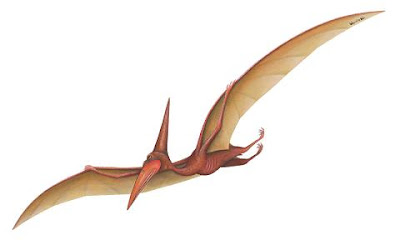Mysterious 'Creature' Spotted in UK Port
ninemsn - A mysterious object has been spotted in waters near Liverpool in England's northwest, sparking speculation it could be a shark.
The object, seen at the Albert dock in Merseyside, has raised questions about the effect England's freezing waters are having on marine biology.
Some experts have said it could be a basking shark while others have said it could simply be a jetski.
Marine biologist Tom Cornell said basking sharks were known to cruise around the coast and that they weren't a threat to humans.
"Although it is unusual for tropical island sharks to be found in this area, it’s not unheard of," Mr Cornell said.
Radio DJ Simon Hoban spotted the creature while viewing an aerial shot of the maritime
tourist spot on Google Earth.
The
image appears to show some sort of sea creature with a curved body, pointed snout and pectoral fins on either side of its body.
The Daily Mail reported that the creature was larger than some of the boats which are lined up beside it.
Mr Cornwell suggested the animal may be lost.
"Perhaps it was an old shark which was looking for a place to die," he said.
**********
Rendlesham Forest UFO Encounter Still Leaves Questions
Thirty
years after claims that UFOs had been spotted in Rendlesham Forest, experts and enthusiasts still can't agree on what happened.
Mysterious craft and lights around the airbases of Woodbridge and Bentwaters in Suffolk were reported around Christmas 1980.
BBC Suffolk's Mark Murphy presented a special 30th anniversary radio show from the forest in December 2010.
Mr Murphy promoted his favourite theory, but questions remained.
Theories
Aliens from outer space, beings from another dimension, testing of secret military projects, a helicopter carrying something, light from Orford Ness lighthouse, pranks by airmen - just some of the theories of what happened when the bases were being used by the
US Air Force during the Cold War.
Nick Pope used to run the British government's UFO Project and he undertook a review of the
incident in 1994.
He said: "The military is an inherently secretive organisation and if anything happens such as these theories about secret
classified aircraft or drones, there certainly would have been scope to cover something up and that would have been the default position." Continue reading at
Rendlesham Forest UFO mystery still leaves questions
************
David Attenborough and the Mystery of the Elephant Bird
As
souvenirs go, the giant fossilised egg that Sir David Attenborough keeps wrapped up for safe-keeping in the cellar of his London home is not bad for someone with a 60 year career as Britain's
foremost natural history documentary maker.
Now in a bid to find out more about the foot long egg he collected on the island of Madagascar 50 years ago and the birds that laid them, Sir David has returned to the island off the east coast of Africa for a new BBC documentary on a quest to discover what happened to the largest birds to ever live on the planet.
The egg was laid by an elephant bird, which were more than 10 feet tall and weighed around half a ton, but what caused the huge birds to die out has remained a mystery, with some claiming they were hunted to extinction by humans and others blaming climate change.
But Sir David claims there is now compelling evidence that suggests the birds were gradually killed off by the early human inhabitants on the island stealing the giant eggs for food. He believes the birds themselves were revered by the indigenous populations, but the use of their eggs for food, combined with the destruction of the forests where the elephant birds lived, led to their eventual demise.
Recent archaeological evidence has revealed the fragments of elephant bird egg shells among the remains of human fires, suggesting that the eggs, which are 180 times bigger than a chicken egg, regularly provided food for entire families. Continue reading at
David Attenborough and the Mystery of the Elephant Bird
************
Shark Scientist Unravels Egypt's Red Sea 'Jaws'
calgaryherald - As arguably the world's foremost chronicler of shark attacks, George Burgess knows better than anyone what the sea's most ferocious predator is capable of.
His position as curator of the International Shark Attack File, a database started in the 1950s, has forced him to confront the results in mortuaries around the globe.
It is always a harrowing experience, one that demonstrates the fragility of
the human body when faced with some of the most powerful jaws in the animal kingdom.
Take the case of Shirley Anne Durdin who was decapitated and torn in two after a white shark attacked her as she snorkelled off the South Australian coast in 1985.
Then there was Theo Klein, killed by another white that tore flesh from his dead body in front of horrified onlookers in 1971 after he was caught in its jaws off Buffalo Bay, South Africa.
Perhaps because the file, which contains more than 4,000 investigations of shark attacks dating back as far as the 16th century, is largely secret, Burgess is reluctant to discuss recent cases.
But when it comes to the business of killing, it is clear that some sharks go about their task with all the finesse of a medieval executioner.
"If something is big enough to get its mouth around your head, the neck is very easily severed," he said. "It can be done in several bites or maybe in just one. A large, fully grown white shark could cut a human in half."
As a scientist, who was drawn into his profession by reading the books of oceanographer Jacques Cousteau as a child, Burgess has little appetite for the gore of shark attacks that exercises so morbid a fascination on the rest of us.
Yet the conservationist admits the shark attacks that have taken place off the Egyptian Red Sea resort of Sharm el-Sheikh in the past month are "right up there" with the most fascinating investigations he has ever mounted.
Over the space of six days, sharks struck at swimmers in relatively shallow waters along a five-kilometre stretch of beach lined with some of the most exclusive hotels on the Red Sea Riviera. Four people were maimed and a fifth was killed.
Called in to investigate by panicked authorities, Burgess was swiftly able to establish at least two of the attacks were carried out by the same oceanic whitetip shark, an astonishing revelation in an extraordinary case.
In recent years, experts have largely debunked the notion that single rogue sharks, unlike the predator dreamed up by the author Peter Benchley in Jaws, ever strike more than one victim. Having discovered the taste of human flesh is not to their liking, the vast majority of sharks do not make the same mistake again.
Yet photographic evidence clearly showed a whitetip with a distinctive notch in its tail-fin attacked a Russian man on Nov. 30, taking off part of his leg. Six days later, the same shark returned to a nearby stretch of water by the Hyatt
Regency Hotel.
As her partner Rudi looked on in horror, Renate Sieffert, a German
tourist who had been coming to Sharm el-Sheikh for 10 years, was pulled under the water.
Others swimmers described how she screamed as the churning waves around her turned red while the shark thrashed about. By the time she was pulled ashore, Sieffert was dead.
The whitefin has been all but absolved of involvement in two of the attacks, thought to have been carried out by shortfin makos, but remains a possible suspect in the mauling of Olga Martsinko, a Russian-Ukrainian woman.
Only once before has there been unimpeachable evidence of a shark striking more than one human victim. In 1916, a great white killed four people and injured a fifth off the New Jersey Coast. The attacks captured the public imagination and inspired the Jaws movie.
Although Burgess has investigated that case exhaustively, he has never been able conclusively to prove why the shark behaved in the way it did.
But the most convincing explanation, he says, is the great white was in some way injured or malformed, forcing it to attack humans because it was unable to hunt its normal prey.
The same may be true of the serial attacker off Sharm el-Sheikh.
"It is something we are looking at here," he said. "Was this just a shark that made a couple of errors of judgment or decided that humans were OK, or was it an act of desperation by a shark trying to make a living in order to survive?"
Solving the mystery is a little like mounting a murder inquiry. In the days he has been in Egypt, Burgess has been questioning witnesses, studying photographs, forensic evidence and pathologist reports and scouring the waters near each of the incidents.
The most pertinent questions revolve around what the sharks were doing so close to the shore in the first place. Both whitetips and makos are pelagic sharks whose natural habitat is far out to sea -- and it is here where they are most dangerous.
Until last week's attacks, only two juvenile whitetips had been seen off the coast of Sharm el-Sheikh all year.
Preliminary findings suggest that humans are at the very least accessories to the crime.
Unusually warm water temperatures, perhaps the result of global warming, may have lured the sharks into the northern reaches of the Red Sea.
A ship carrying sheep from Australia is also a prime suspect, after it tossed carcasses and waste into the sea. Burgess says sharks from 160 kilometres away could have been attracted by the ship.
Sharks may inspire a visceral, even primal fear in humans, but in reality they pose us little danger.
There are an average of five shark-related deaths a year. By contrast, human beings kill up to 75 million sharks annually, for their fins, their meat or simply as bycatch. With some species seeing their numbers fall by 99 per cent in 50 years, the king of the seas is facing a battle for survival.
Which is why, Burgess says, it would be wrong to hunt and kill the sharks responsible for the Sharm el-Sheikh attacks. Doing so would not make the beaches safer anyway, something that would be better achieved by monitoring the seas so beaches can be closed when sharks are close to shore.
**********
Be Warned: Aliens Hunt Aussie Territorians
ntnews - A dozen Territorians have been abducted by extraterrestrial life - and they are "just the tip of the iceberg", an expert on paranormal activity says.
Mary Rodwell, founder of the Australian Close Encounter Resource Network, said in her role as an hypnotherapist and counsellor for people with paranormal encounters she has come across "at least a dozen people from the Northern Territory", who had experienced encounters with "non-human beings".
"I had people telling me they found strange little marks, bruises and scars on their bodies when they woke up in the morning.
"Many of the marks and scars fluoresce in ultraviolet light. They have time missing in their memory.
"People found themselves outside their house with all the doors locked from the inside, and they don't know how the hell they got there."
Ms Rodwell said many people did not want to go public with their encounters, fearing they would be laughed at.
"Or they just don't know what to make of it," she said.
"But this is real, this is not a fantasy. I don't have any doubts this is reality, we are being visited.
"There is a lot of evidence out there for it (abductions).
"The people who contacted me are just the tip of the iceberg; I am sure there are plenty more."
The British-born counsellor said that most of the abduction reports came from "around the vicinity of Darwin".
"It doesn't have to happen in isolated places, it happens everywhere - to articulate, credible people, who are not crazy.
"Some people have seen things up close, like a beam of light that came down from a craft, or crafts sucking up water from dams or lakes."
Ms Rodwell said many of the Territorians who had turned to her for help had not believed in UFOs or aliens until they had seen things "with their own eyes".
http://naturalplane.blogspot.com/2010/12/fortean-oddball-news-liverpool-creature.html
 Kita mengenal hiu dan piranha sebagai predator air paling ganas. Namun kelihatannya reputasi mereka mendapat saingan berat dari seorang pendatang baru. Seekor ikan liar yang lebih mematikan dibanding piranha dan telah membunuh orang baru-baru ini ditangkap di pantai Inggris untuk pertama kalinya.
Kita mengenal hiu dan piranha sebagai predator air paling ganas. Namun kelihatannya reputasi mereka mendapat saingan berat dari seorang pendatang baru. Seekor ikan liar yang lebih mematikan dibanding piranha dan telah membunuh orang baru-baru ini ditangkap di pantai Inggris untuk pertama kalinya. Ikan ini pertama kali ditangkap oleh Andy Alder dari Lincoln. Tanpa sengaja ia menangkap ikan sepanjang 60 cm ini ketika ia sedang memancing di sungai Witham dekat Hykeham utara, Inggris. Dia berkata,"Ikan itu memiliki mulut penuh dengan gigi setajam silet. Sejujurnya, saya takut setengah mati."
Ikan ini pertama kali ditangkap oleh Andy Alder dari Lincoln. Tanpa sengaja ia menangkap ikan sepanjang 60 cm ini ketika ia sedang memancing di sungai Witham dekat Hykeham utara, Inggris. Dia berkata,"Ikan itu memiliki mulut penuh dengan gigi setajam silet. Sejujurnya, saya takut setengah mati."

















































